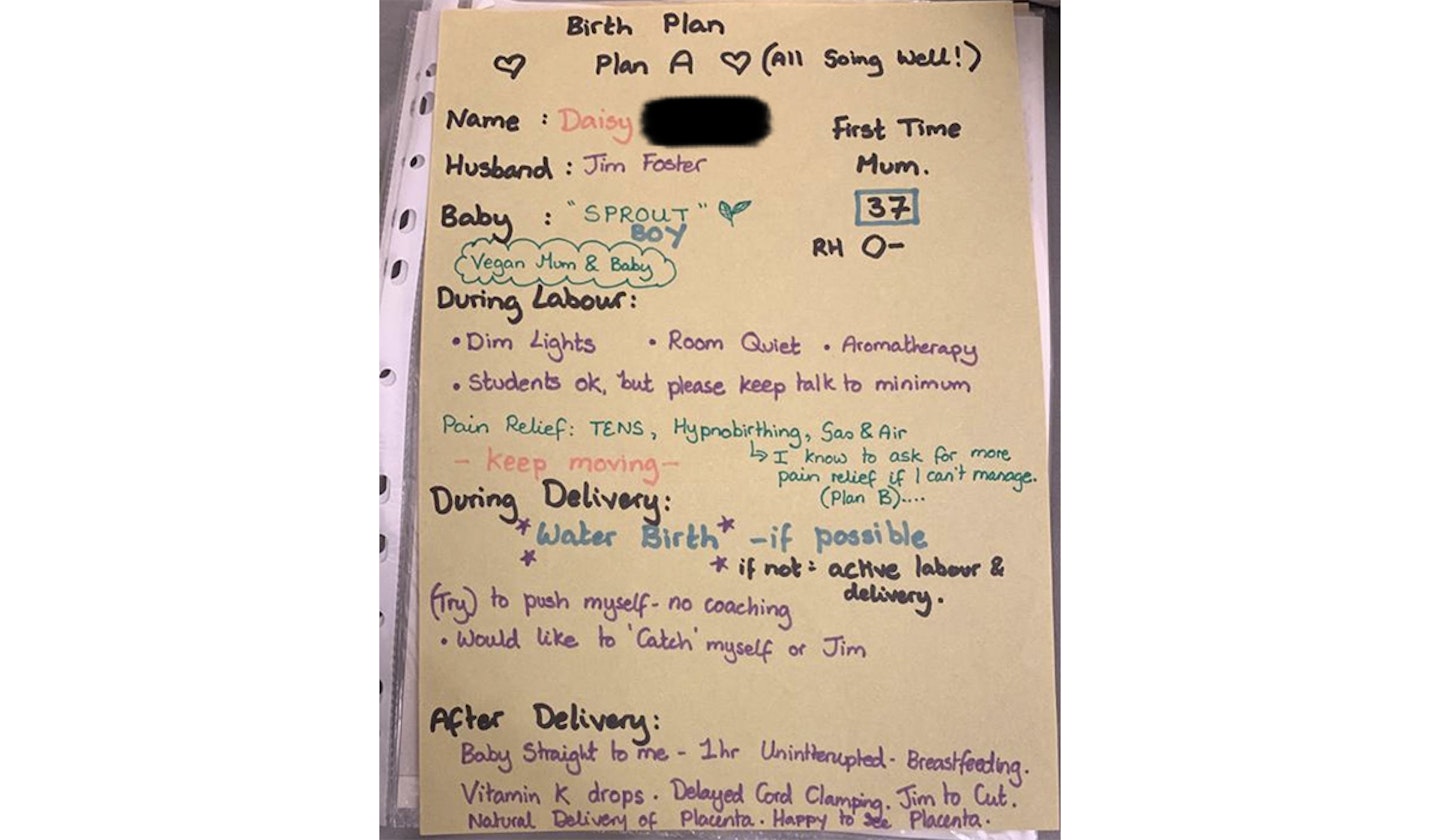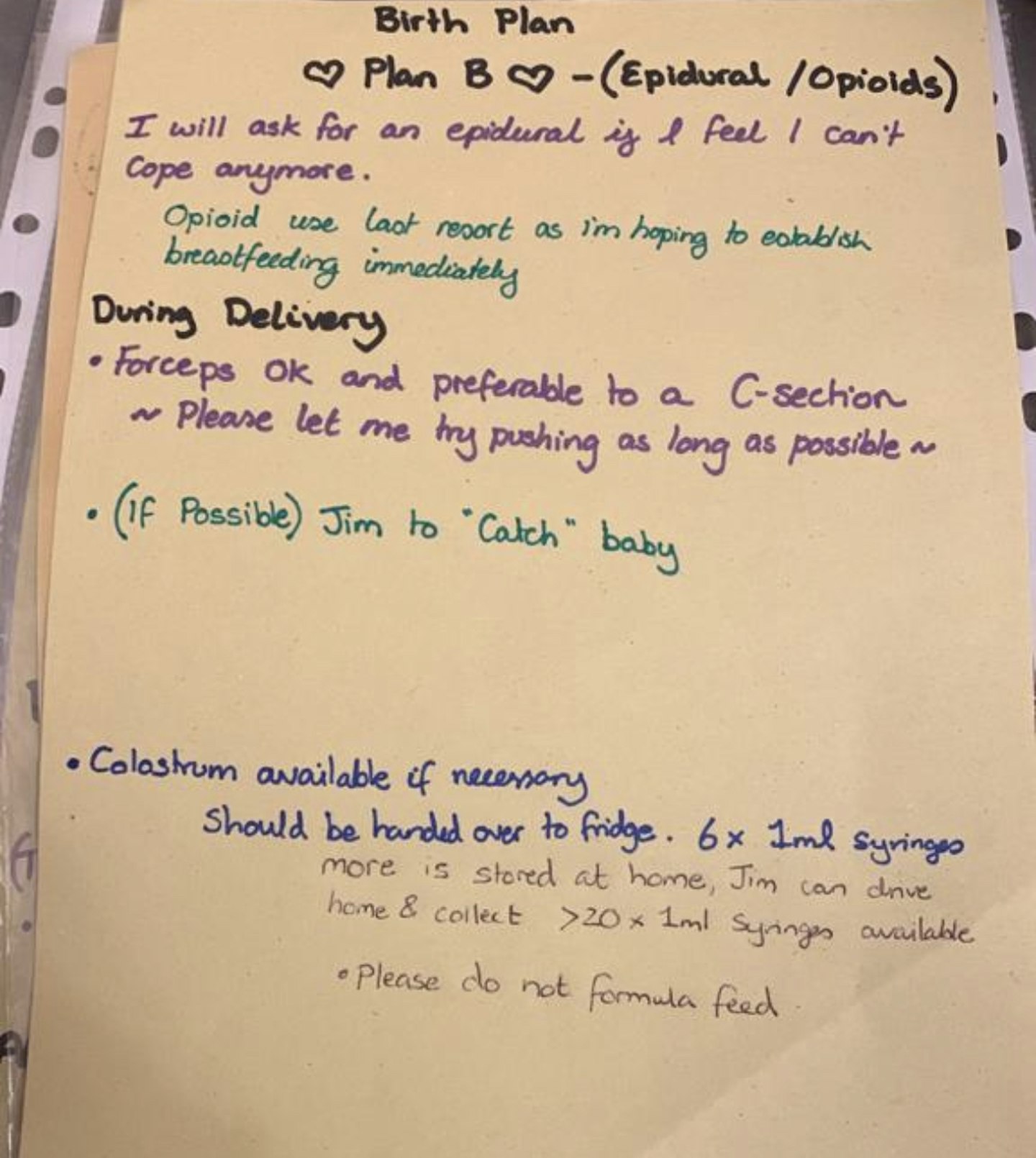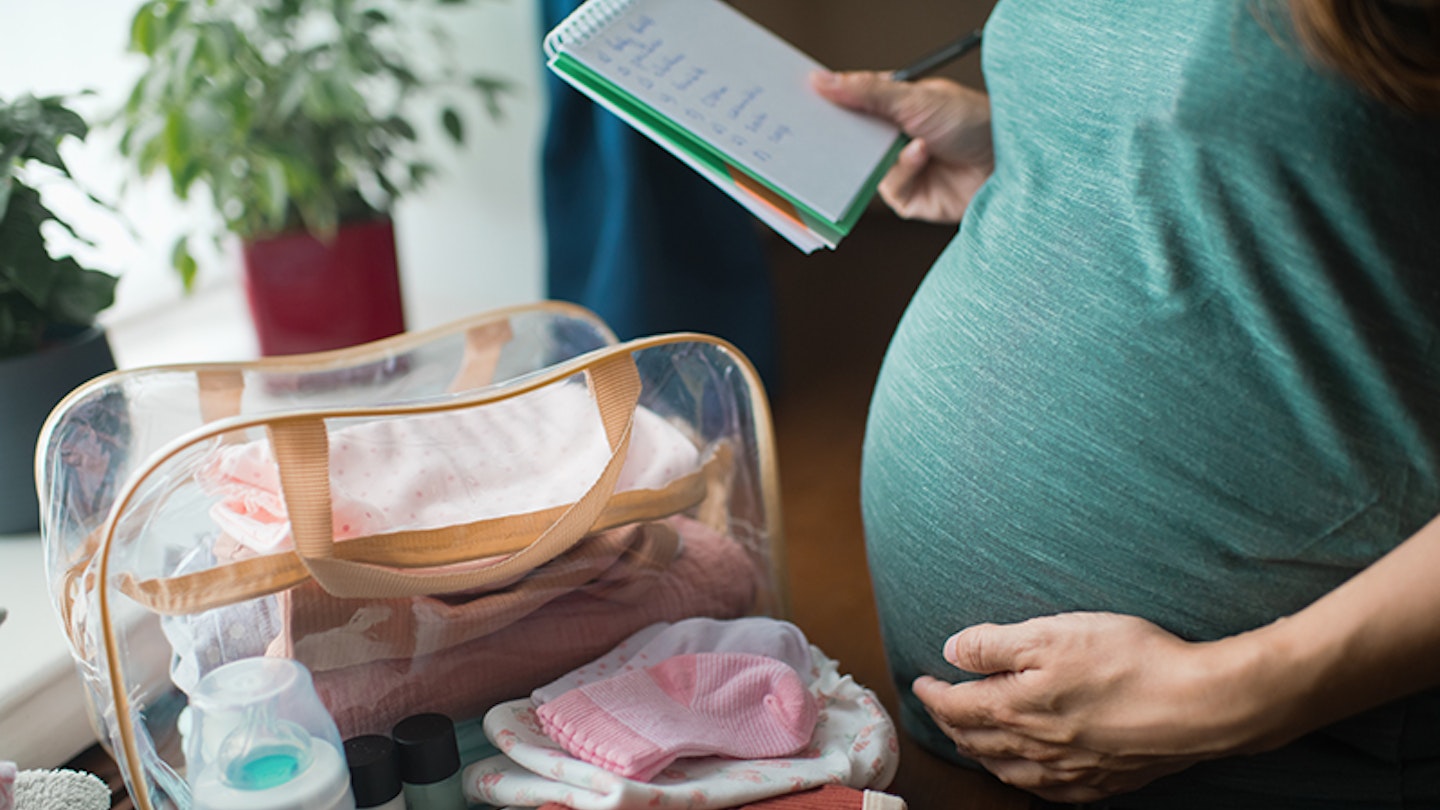Welcome to my blog on the rollercoaster that is new fatherhood. I’m Jim, my wife’s name is Daisy, I turned 50 last September and Daisy is a spritely 37. We had our first child in October – hence this, The Geriatric Dad Blog!
This is a proper, ‘in real life’ read from a man's perspective, so I hope you enjoy it and follow the series as we go.
This time: the importance of writing a birth plan!
It hardly seems possible, but it's been over five months since I last wrote a blog update about my journey toward becoming a first-time dad at the ripe old age of 50.
Then, September was drawing to a close and Daisy (my wife) was 36 weeks pregnant and coming to the end of a tricky third trimester.
Scans were projecting that Baby Sprout (the nickname we gave our son) could end up weighing as much as 11lb if he went full-term.
Consequently, in those closing days the pregnancy went from low to high risk, adding to our anxiety as Daisy became increasingly immobile and in more and more pain and discomfort.
Today, I'm pleased to report we're proud parents of a healthy, bouncing baby boy who we've named Wilfred. He's a chubby, adorable little bruiser of love who weighed 8lb 14oz at birth (the estimates were somewhat out) and is now already wearing clothes made for 12-month-olds!
Mum and son are doing great and I couldn't be prouder of them.
Best thing about being a new dad?
Easy! It's when I get home from work and he makes eye contact with me before recognising who I am and breaking into a beaming smile, while waving his arms manically and accidentally punching mummy in the boob (which always makes me laugh!)
It melts my heart. But it's not been an easy ride getting to this point. The birth was difficult, lasting 72 hours from the first contractions of labour through to the moment Wilfred came into the world via a category-2 C-section.
I'll write in detail about our labour and birth experience in the next blog update.
Suffice to say, supporting Daisy through that and the subsequent recovery process post-birth is one of the reasons I've not been able to write until now.
Everything has been full-on as we don't have any family locally to help take the strain. It's just us three, seemingly against the world at times.
But we're cool with that, we knew what we were signing up for when we were trying for a baby all those months ago.
Parenting: the toughest job in the world
People will tell you that being a parent is the toughest thing you'll ever do.
It is tough. And it's tougher still for you and your partner when they have had a C-section (ie, MAJOR surgery) before being sent home with NO pain killers other than the very same pack of 50p paracetamol you might get on your Tesco order.
It still amazes me how Daisy managed to cope in those days immediately following Wilfred's arrival. She was in a lot of pain and discomfort with minimal pain relief permitted.
But she did manage. She's tougher than I ever could be by far and to this day I remain in awe of her.
Now things are a bit calmer, I've got some spare time in the evenings after Daisy and Wilfred have gone to bed, so I thought it would be good to re-start the blog and cover many of the experiences we went through - from the birthing process through to where we are now.
Hopefully, by regaling you of some of the things we experienced, we'll help with your own birth journey; whether you're currently pregnant or wanting to become parents at some stage in the future.
To start with, let's look at the importance of having a clear birth plan and, from a partner's perspective, supporting your partner giving birth to ensure as much of it as possible actually happens.
Because there are no guarantees at all you'll get what you want.
The importance of having a clear birth plan
One of the things that really helped us stay in control when Daisy was admitted into the labour ward was having a written birth plan in tandem with a clear understanding of what we would do if certain situations were to arise.
For example:
• If the birth pool wasn't available?
• If baby was breach?
• If gas and air wasn't available, or didn't work?
• If a midwife wanted to make an intimate internal examination, or perform a sweep to advance labour?
• If forceps or a ventouse were needed to help delivery?
• If an emergency C-section was required?
We'd worked on our birth plan extensively before Wilfred arrived. It dealt with all of this.
Well, I say 'we' - Daisy came up with the plan and made me memorise it: I just made sure I supported her through it and had her back when she needed me.
As I just hinted, I think the best piece of advice I can give you on birth plans is to try and envision every scenario that you could end up facing and think of how you might deal with that, i.e. the options you are given and what you choose to do.
Remember always - it is your decision. You do not have to take the advice given. You can go your own way and try your best to give birth how you want, but for that to work I'd suggest it's a good idea to research all your options well before you go into labour and what the ramifications of each might be.
Just be prepared that in all probability, things are NOT going to all go exactly how you'd like them to.
No two pregnancies and deliveries are precisely the same in how they pan out. But the options you will be presented with are pretty consistent, so knowing about them in advance can definitely help.
Birth plan 'A'
Daisy came up with three birth plans.
Plan A - her ideal scenario. How Wilfred would arrive, given everything going smoothly, without complications.
Plan B - what would happen if some elements of Plan A did not go as hoped.
Plan C - what would happen if we had to make the best of things definitely not going how we wanted.
I've included pictures of each of Daisy's actual plans here, so you can see what they entailed. It's a good idea to get them printed out and MAKE the midwives / doctors read them, so you increase your chances of getting the birth you want for you and your baby.
It's also vital that whoever will be at the hospital with you knows them inside out, because they won't be in pain and might therefore be in a better position to ensure with the midwives and doctors that their partner's wishes are, where possible, met.

Birth Plan 'A' included the following details:
• Our names
• Dimmed room / ideally with aromatherapy device
• Quietness!
• Water birth
• Preferences for pain relief - Daisy ideally wanted nothing more than gas and air, along with hypnobirthing techniques
• Avoidance of pethidine
• Plan for the immediate hour after birth
• Skin time / significantly delayed cord clamping / vitamin K drops as opposed injection / breastfeeding
As you can see from the picture, Daisy planned everything meticulously.
And in the event any one element of Plan 'A' didn't happen, or couldn't happen, there was a Plan 'B'. And then a Plan 'C' if it all really went wrong!
Birth plans 'B' and 'C'
Plan 'B' outlined what would happen in the event no birthing pool was available, or if Daisy's pain was severe - defined as, too severe for gas and air.

Pethidine was not on our list of preferred pain killers, simply because a) it can get through the umbilical cord and b) Daisy wanted to breastfeed immediately, and it can get into breast milk also.
An epidural was ok in Plan 'B' if the pain got too much, with forceps preferable to a C-section.
Amazingly, Daisy also put that I was to 'catch' the baby as it came out - something I didn't really comprehend until I read and re-read (at her insistence) the plans after we got to the hospital (I'm rubbish at catching anything, let alone a slippery baby covered in amniotic fluid!)
Finally, birth Plan 'C' revolved around what we wanted in the event Daisy had to have a C-section.
For instance, delayed cord clamping for as long as possible, along with immediate skin-to-skin time, implementation of vitamin K drops and absolutely no formula to be fed unless in the most necessary of circumstances (ie, Daisy was unconscious).
Daisy had also been fastidious in collecting a supply of colostrum in the days leading up to the birth - storing it in the freezer. Some 50 1ml syringes had been collected and frozen, a number of which we planned to take with us to the hospital in case it was needed.
As things turned out, we were glad we did take it, as the birth was far from easy and the colostrum came in very handy.

Next time...
Next time I will talk about our birth experience in Hinchingbrooke Hospital, Huntingdon, and how we decided, at the last minute, to employ the services of a doula.
I'll refer back again to the importance of having a birth plan, plus the importance of understanding all the options that are presented to you during the birth and their potential ramifications.
I'll also talk how we used the BRAIN acronym through it all to help us:
B: Assess the Benefits of the option being presented to us and...
R: ...the Risks attached to taking that option
A: Alternatives choices available
I: What our Intuition told us (what we 'felt' was best)
N: Nothing: what might happen if we did... nothing! (Sometimes, the best option!)
Take it from me: BRAIN is an absolutely brilliant approach to dealing with what's thrown at you as baby makes their way into your world.
So, back soon - and I promise that it won't be another 5 months until the next blog goes live!
